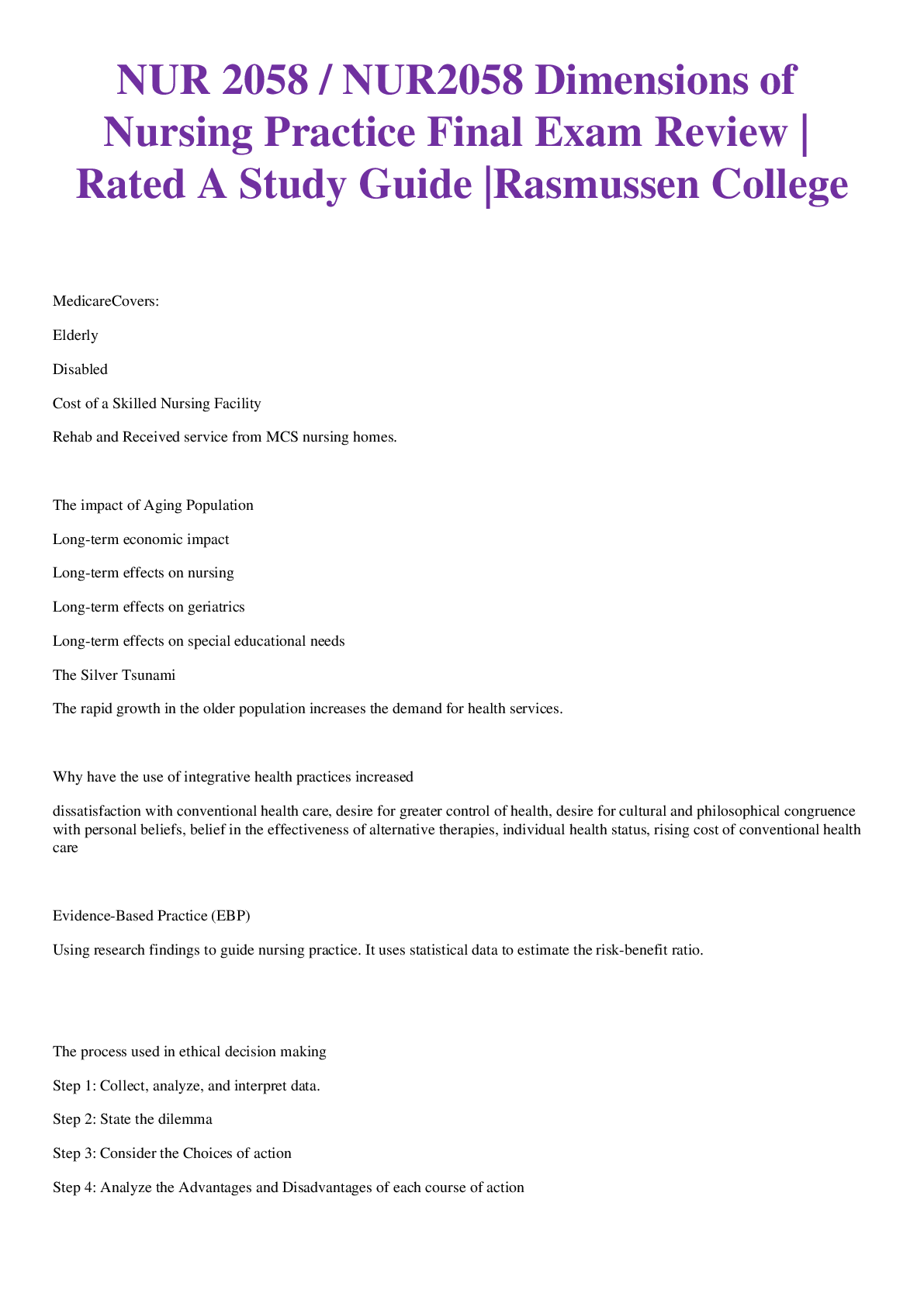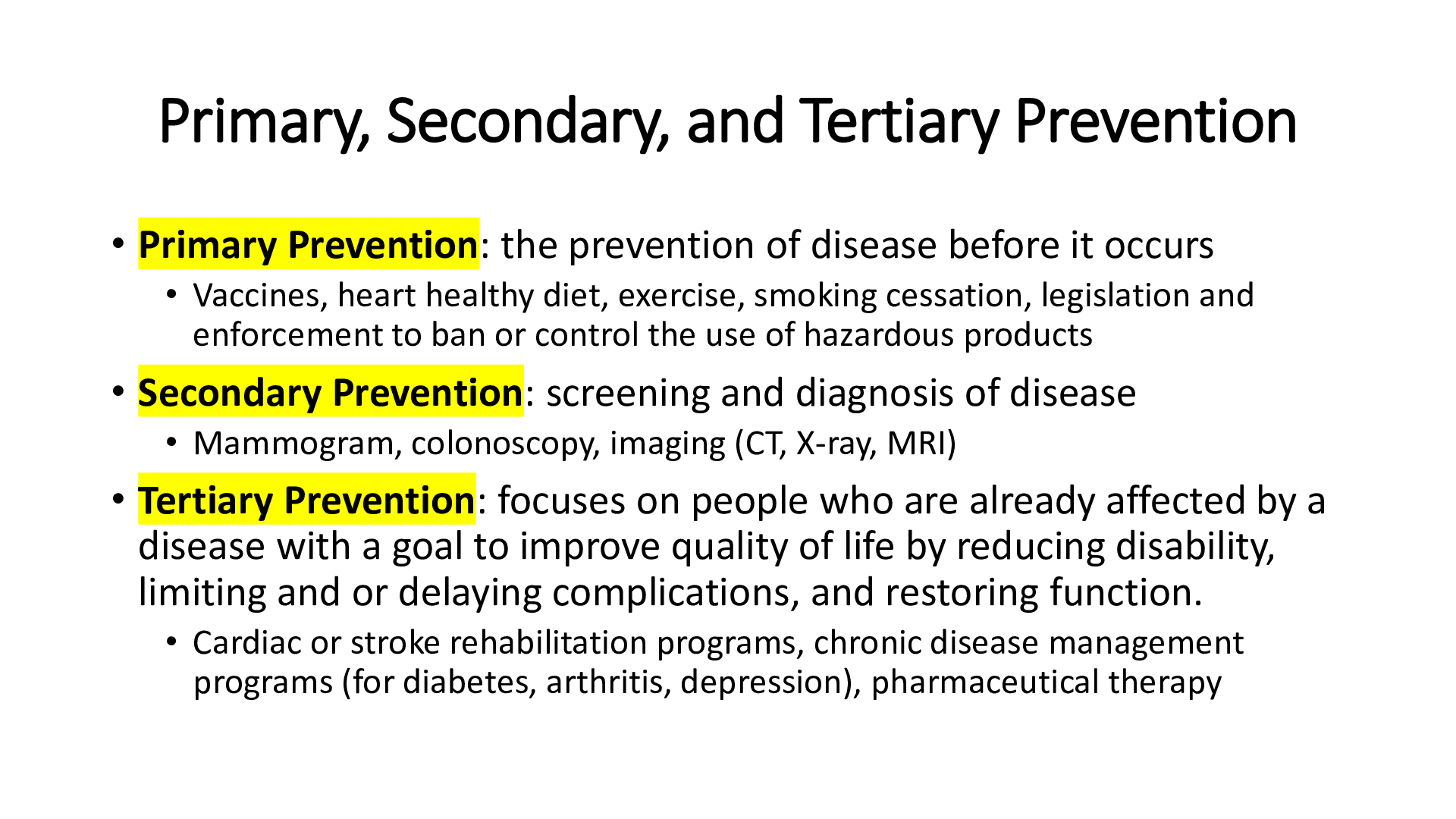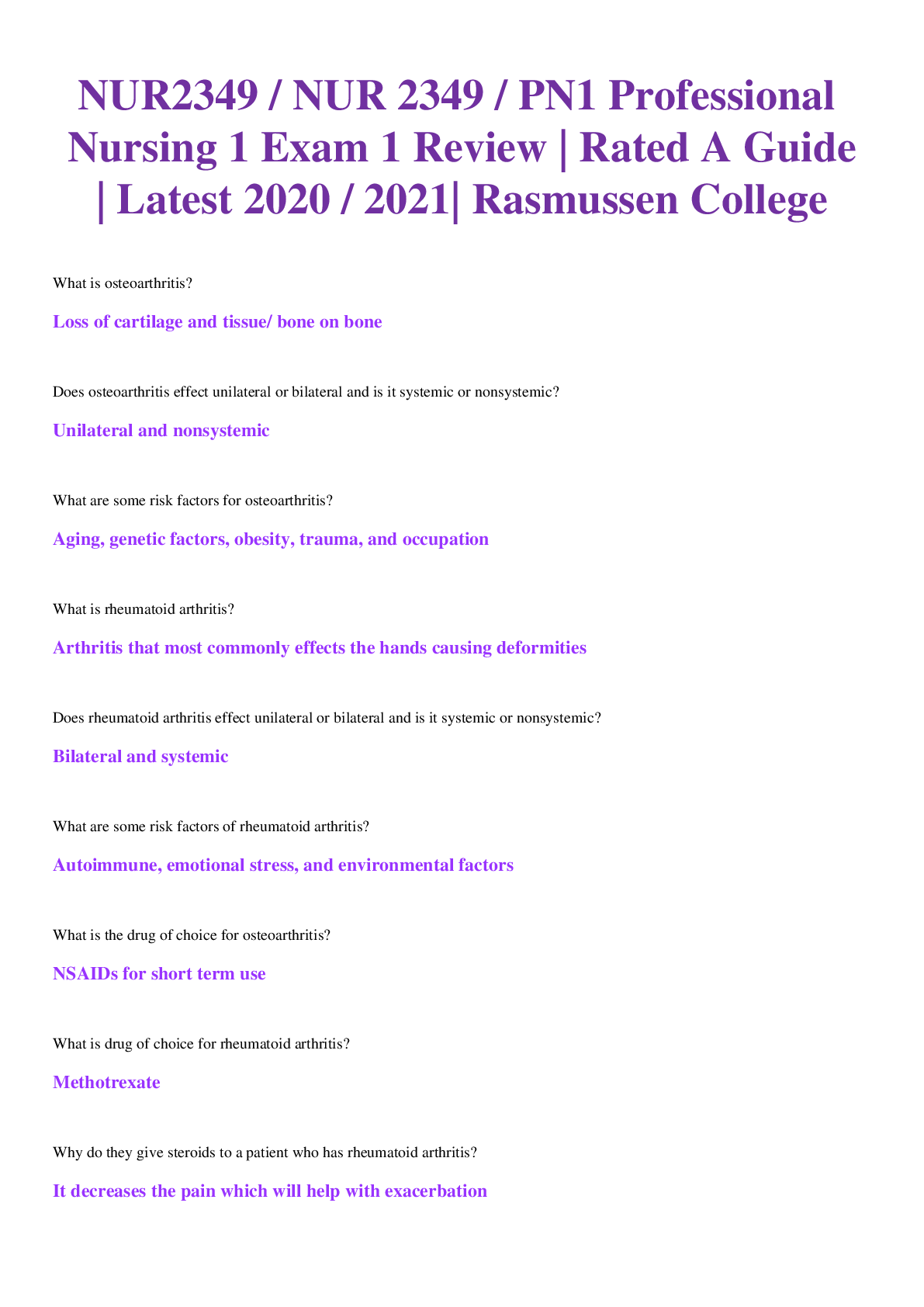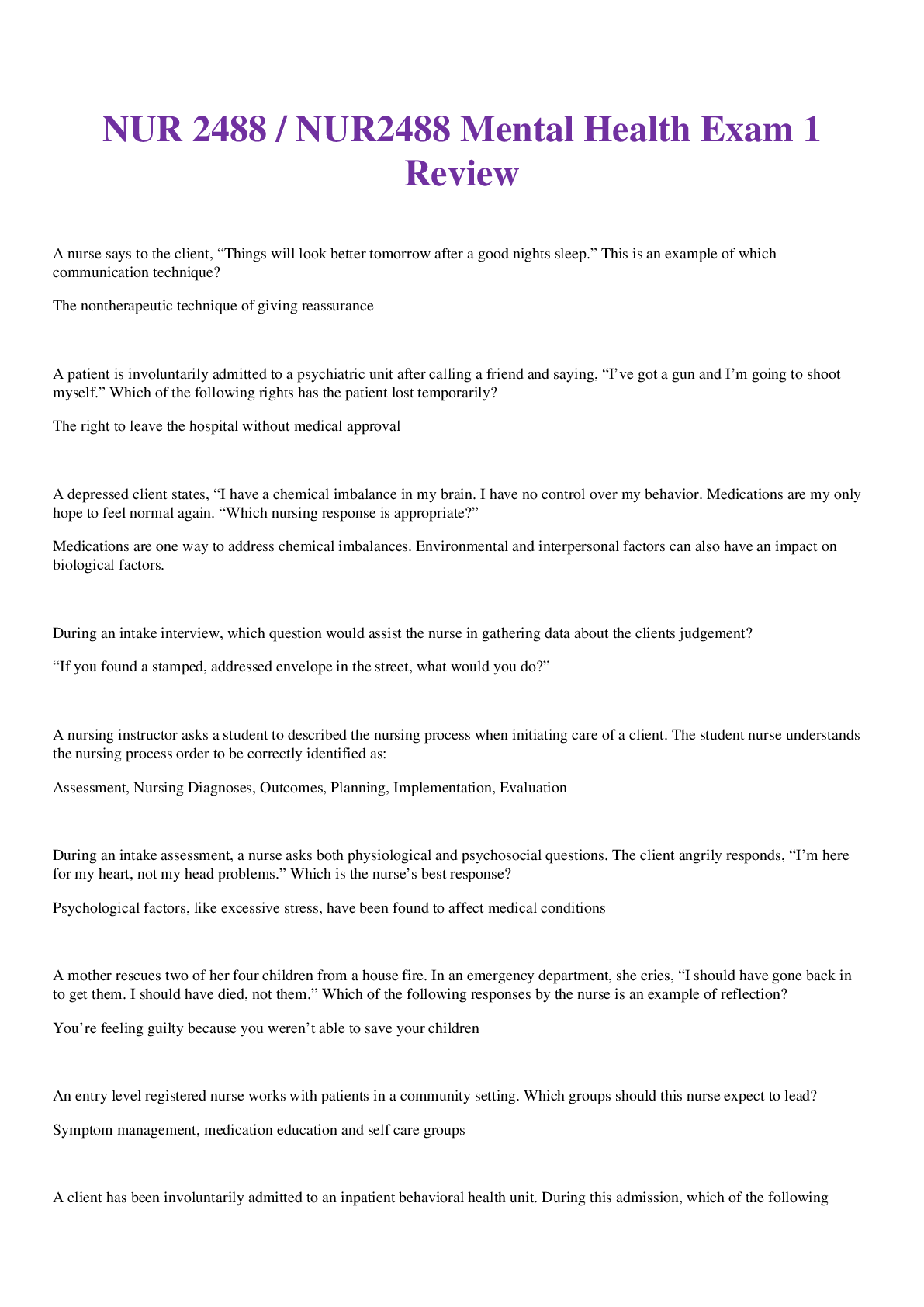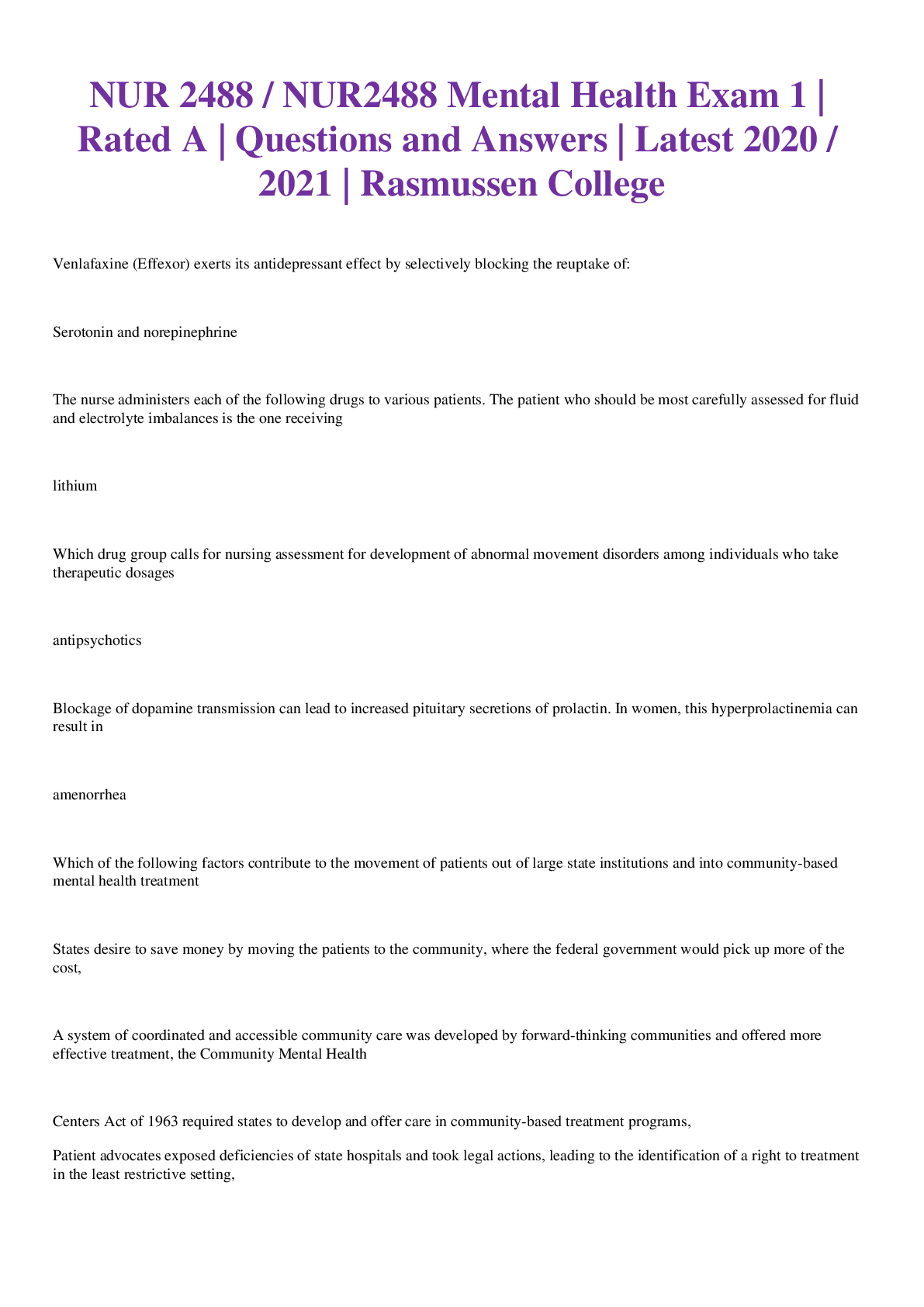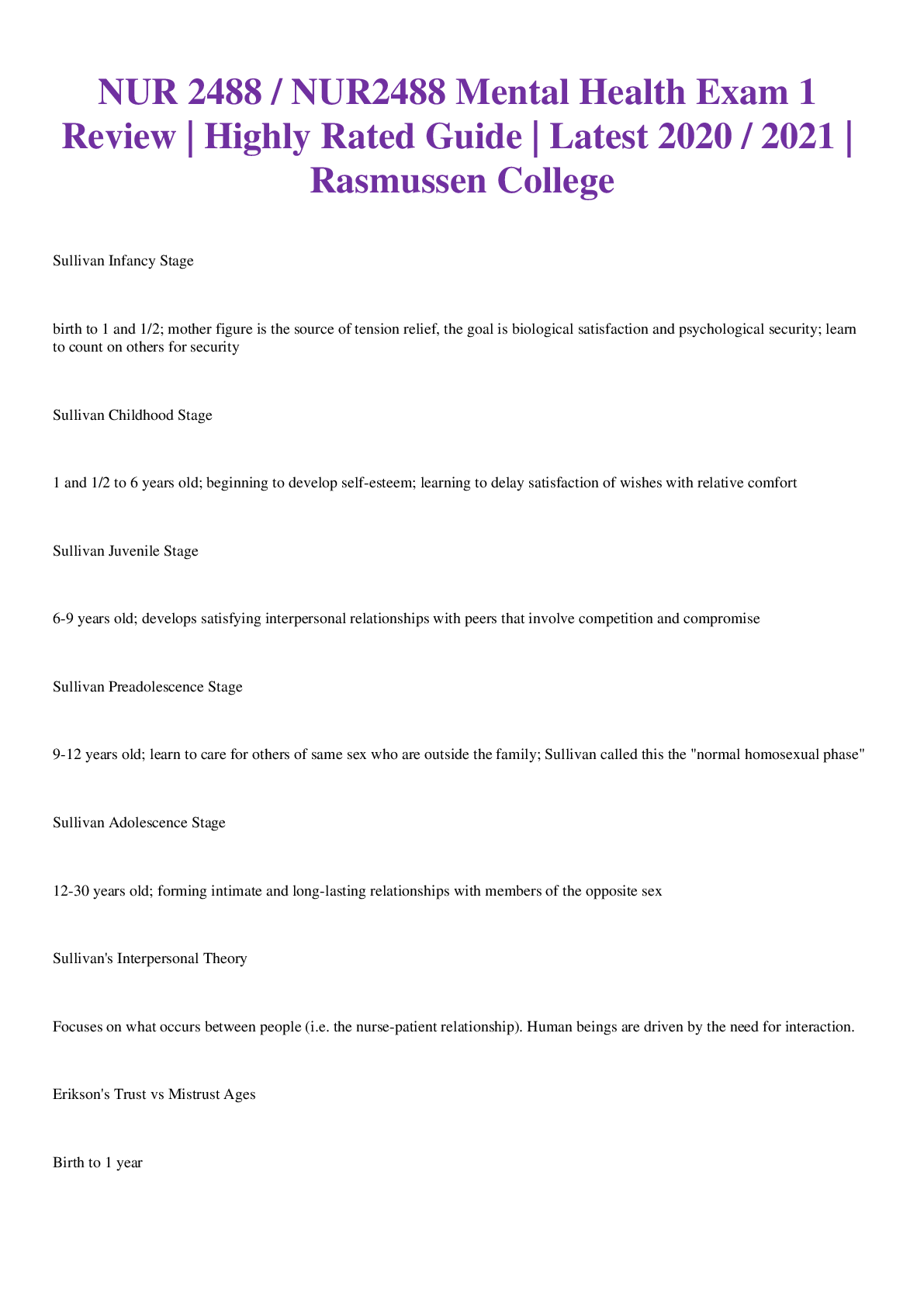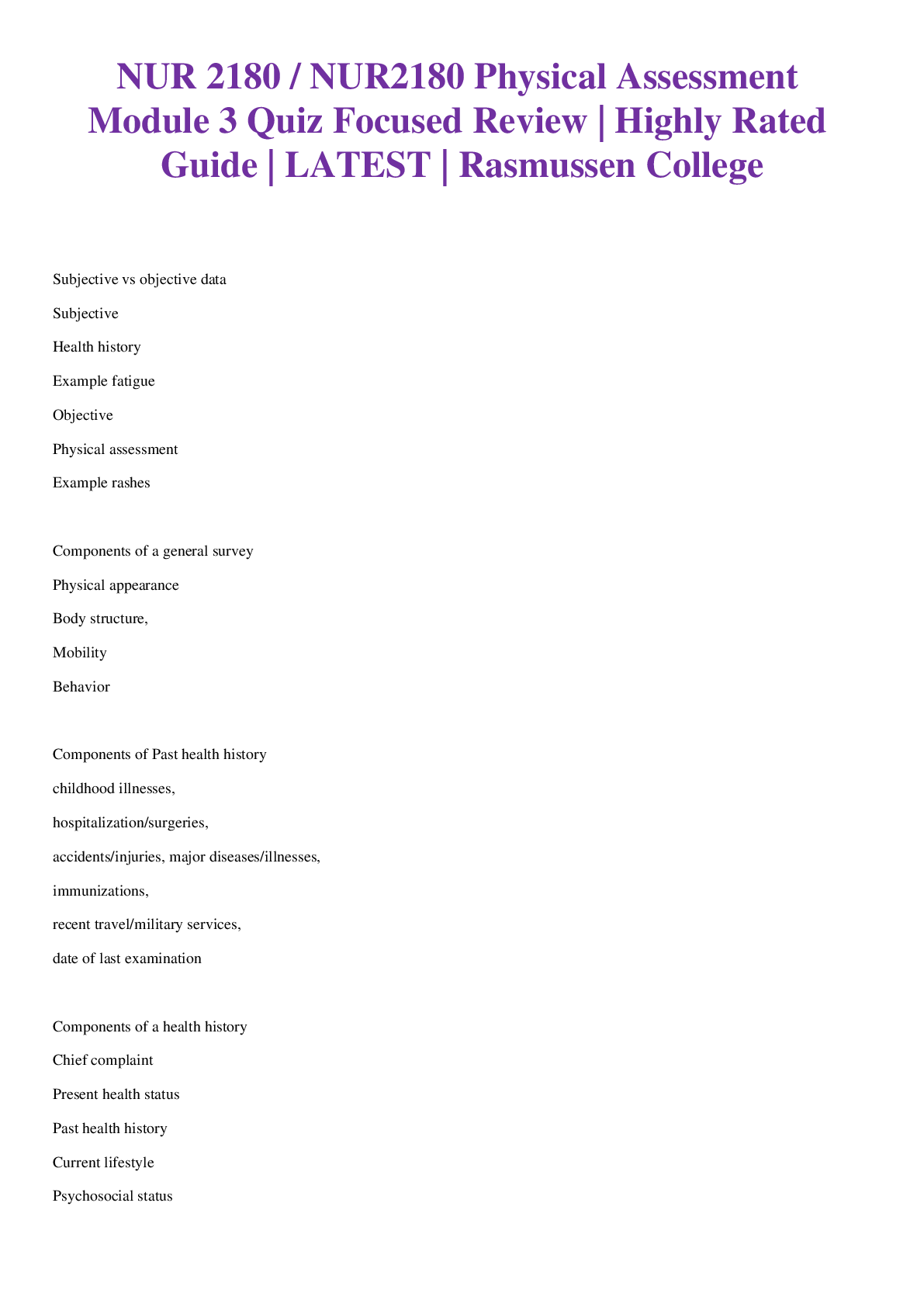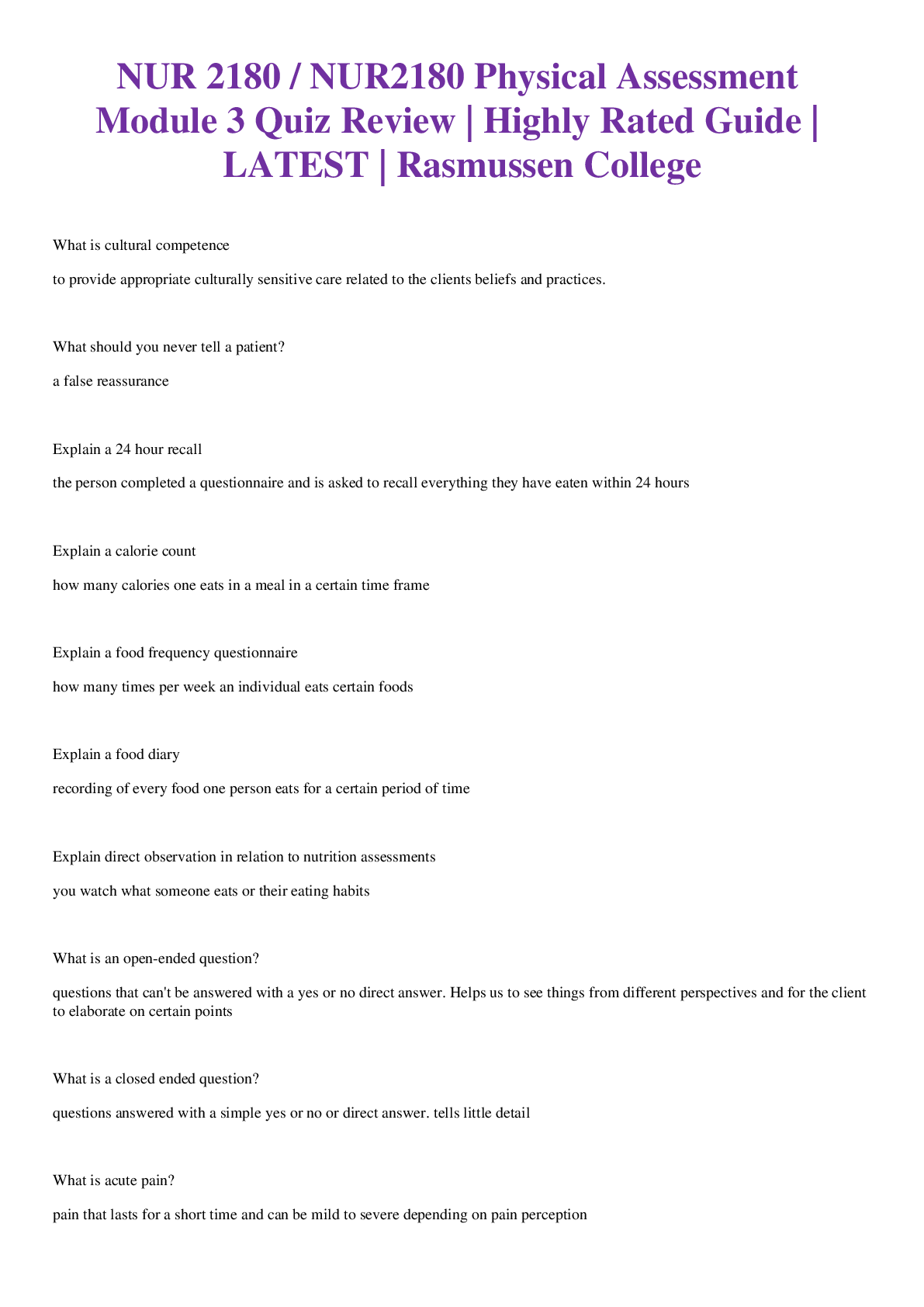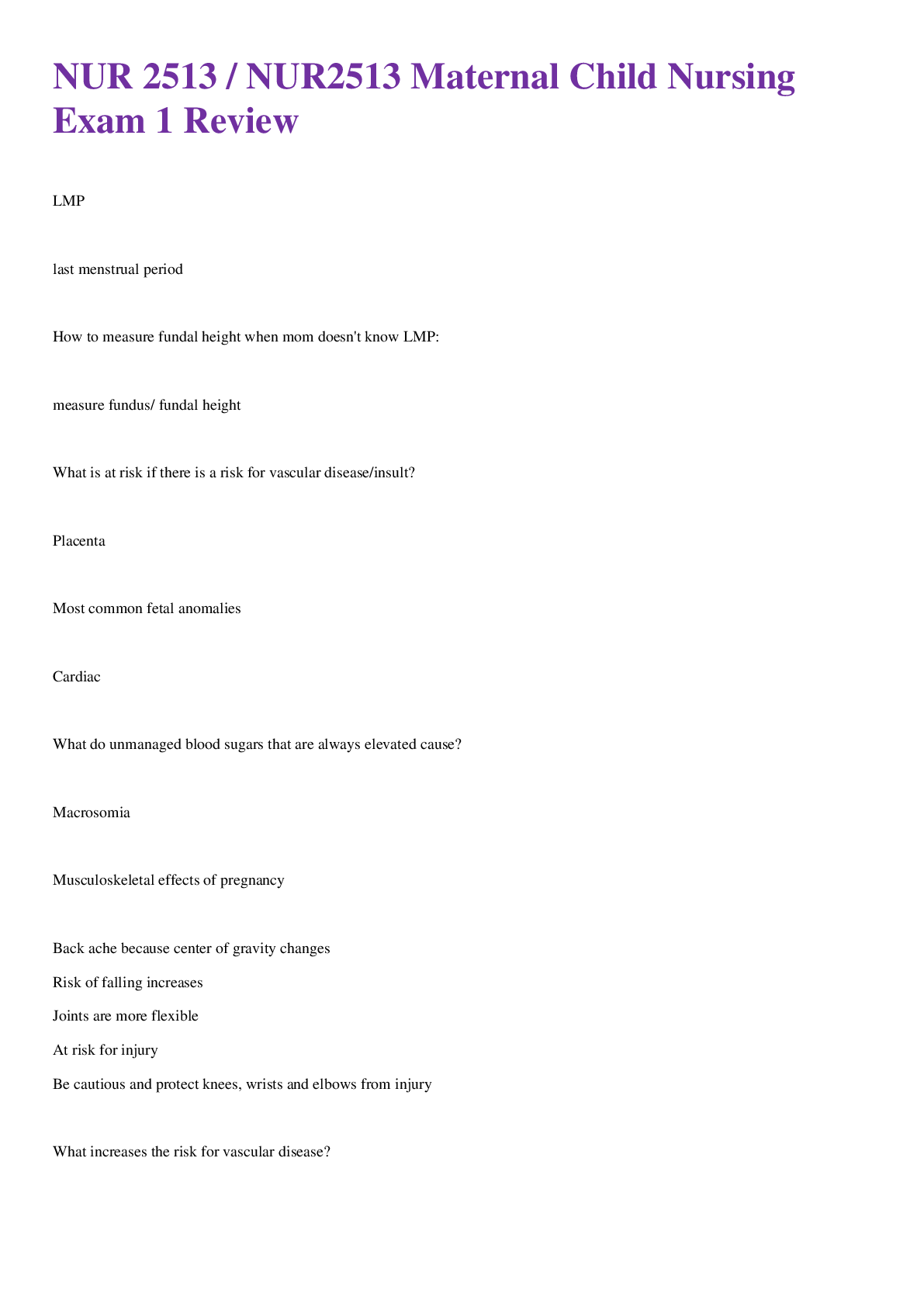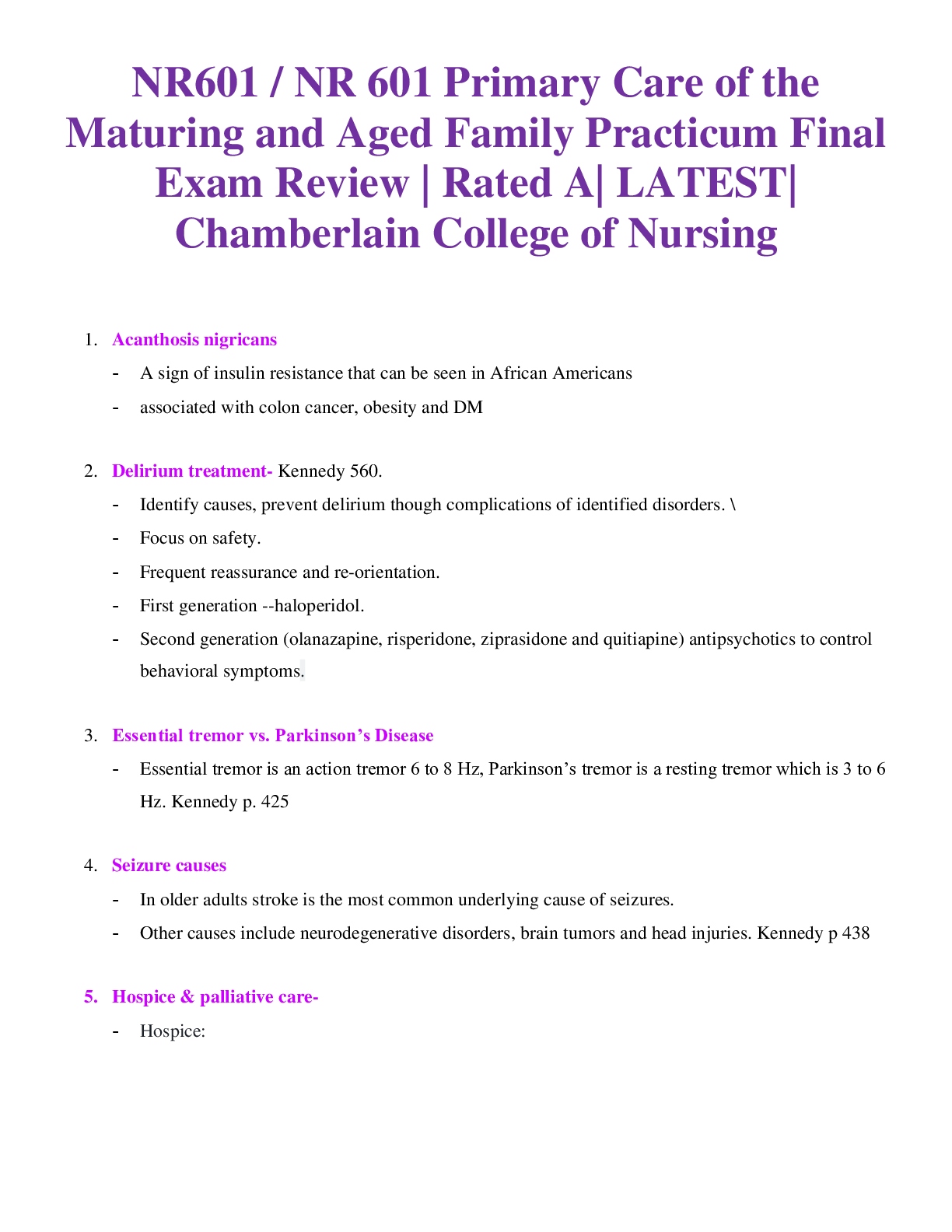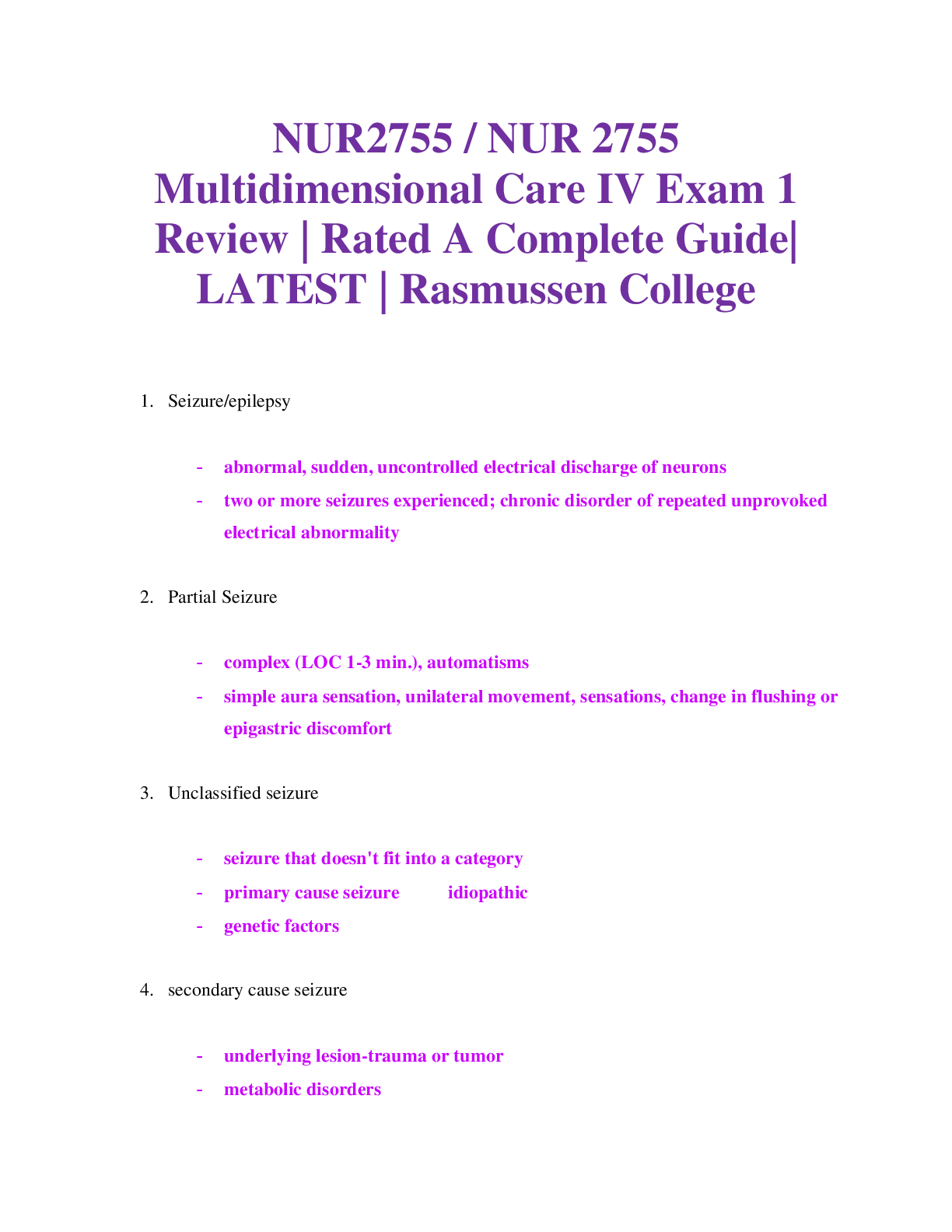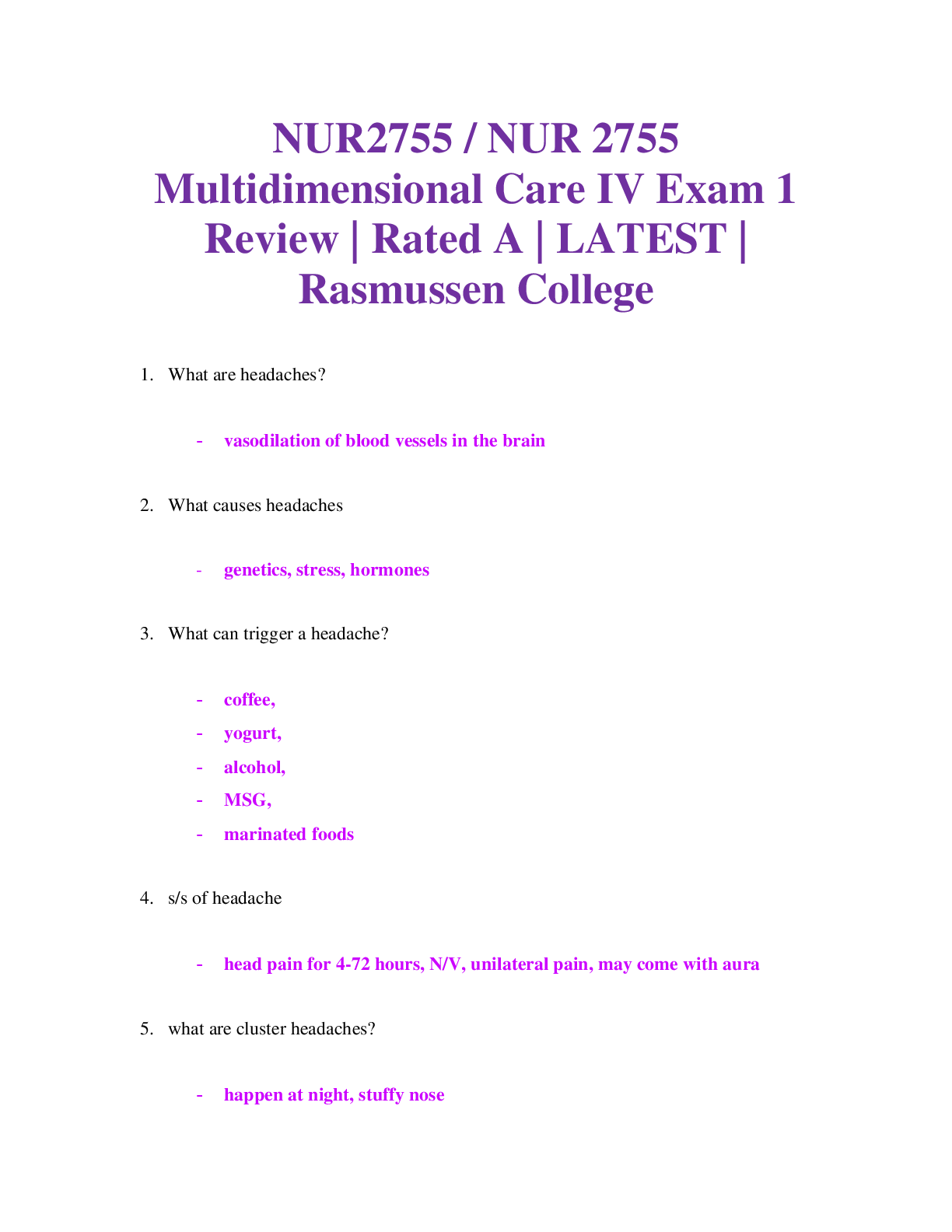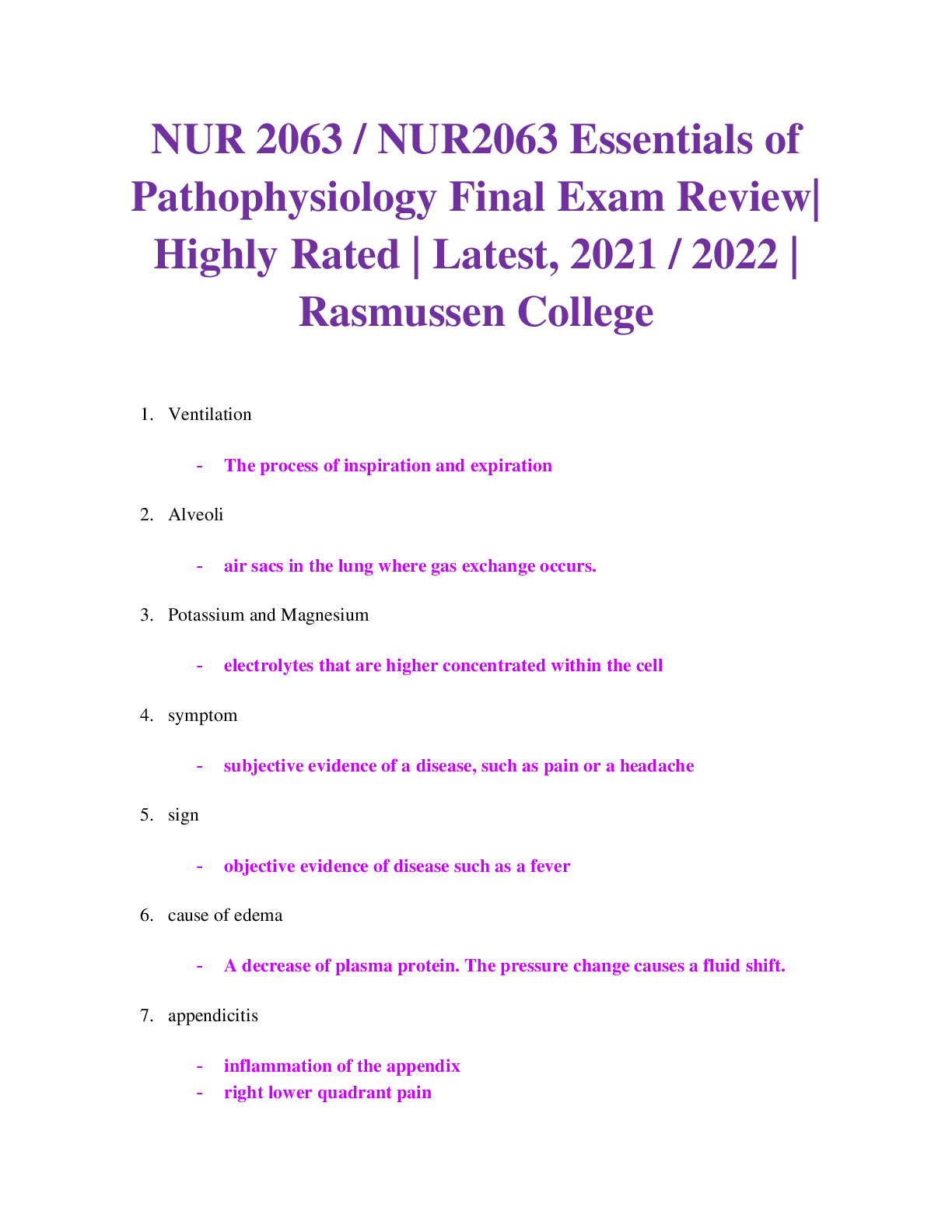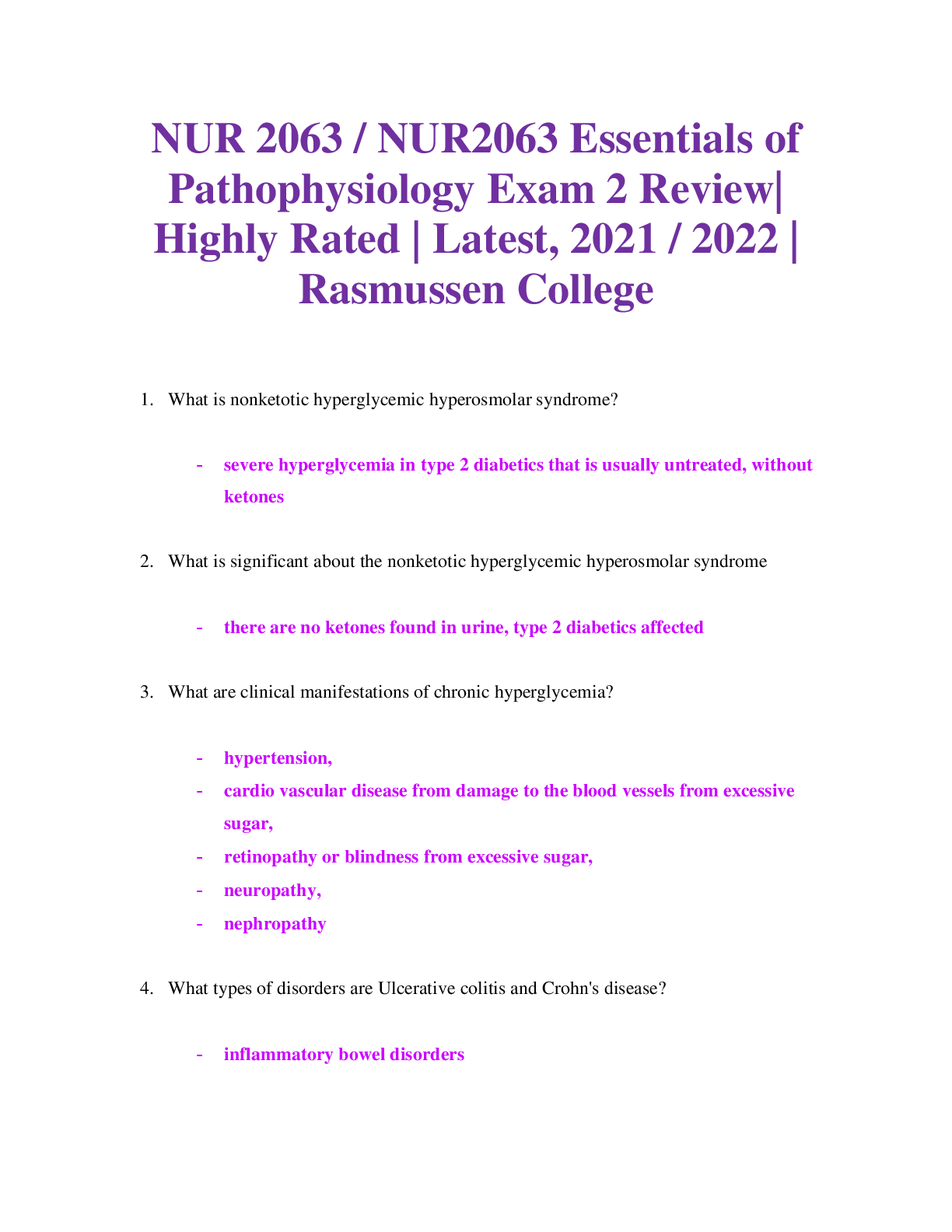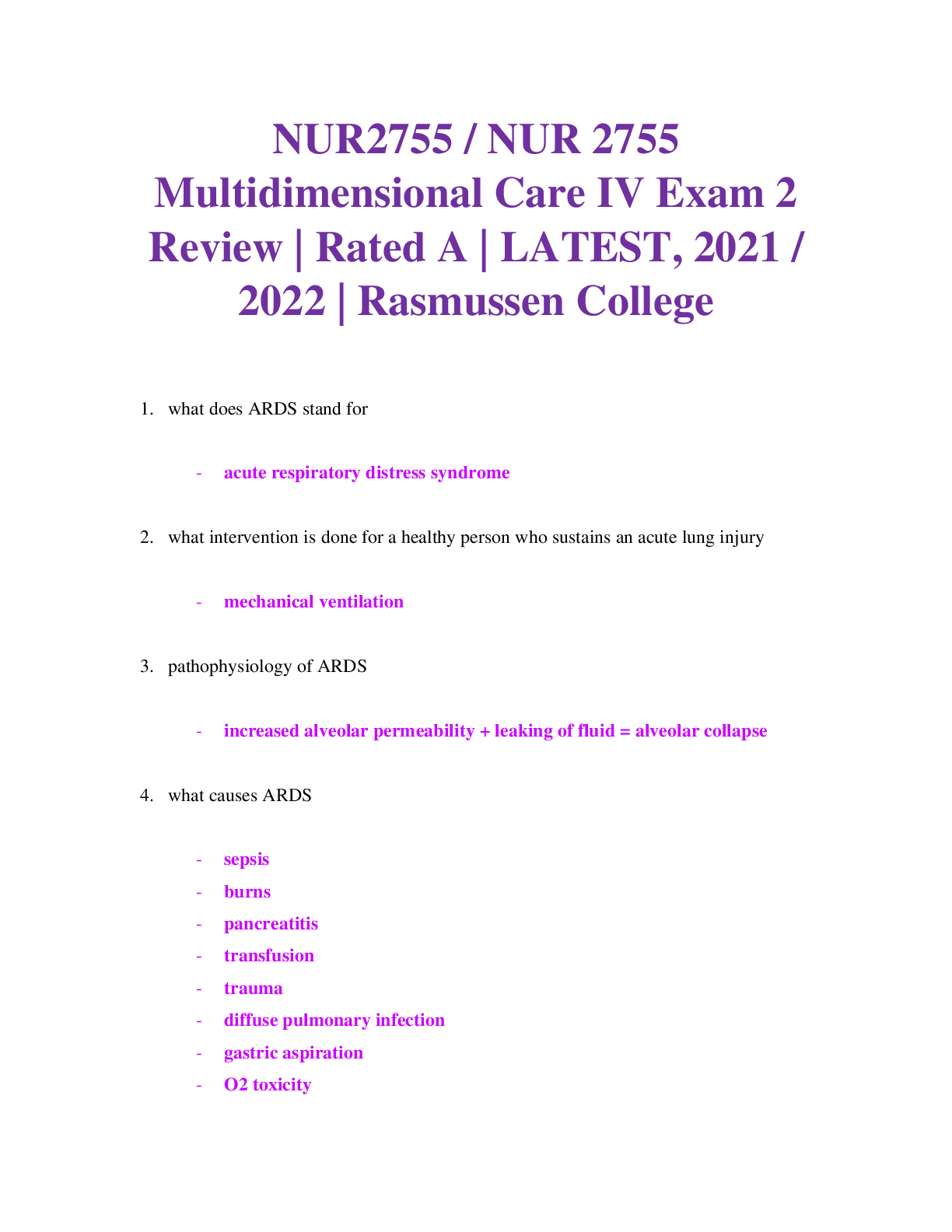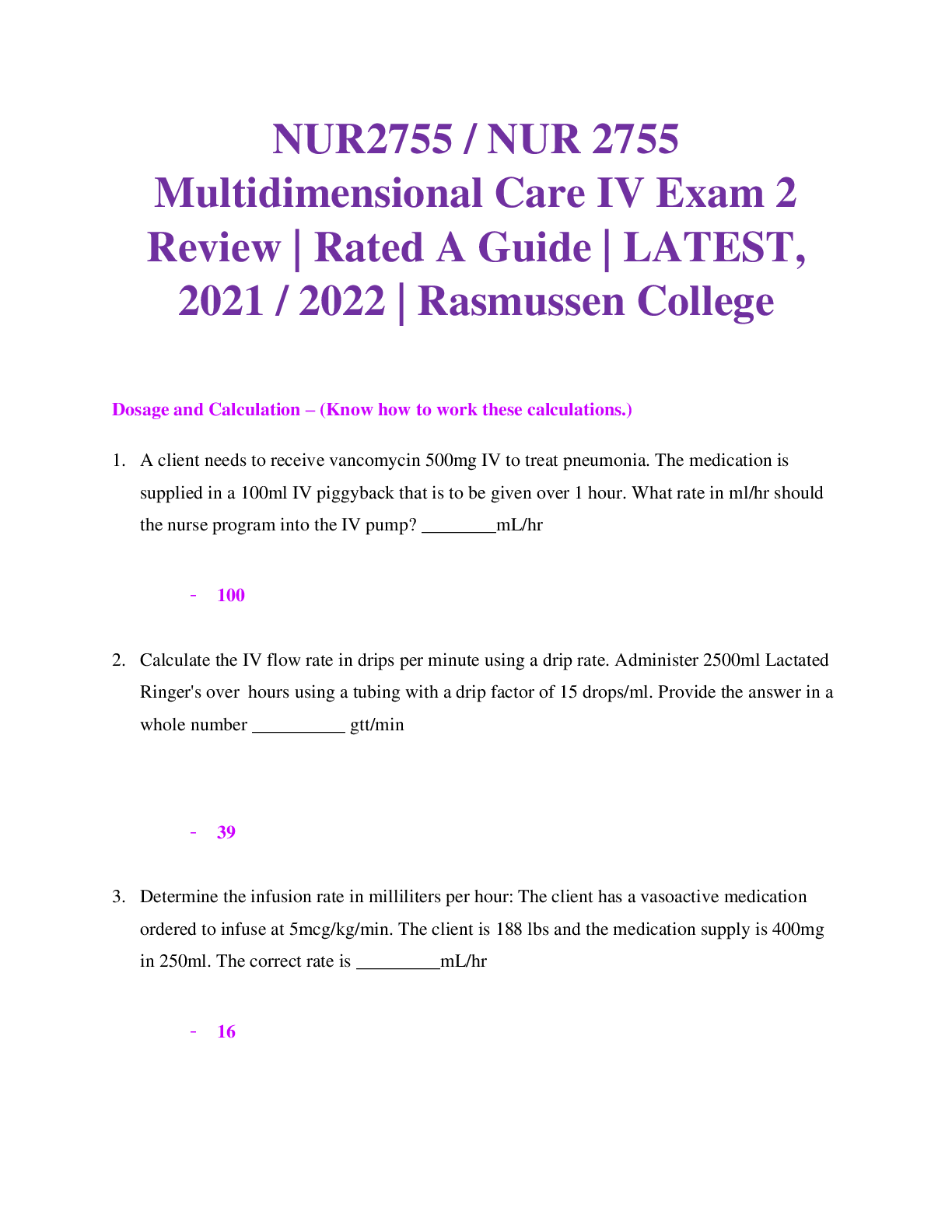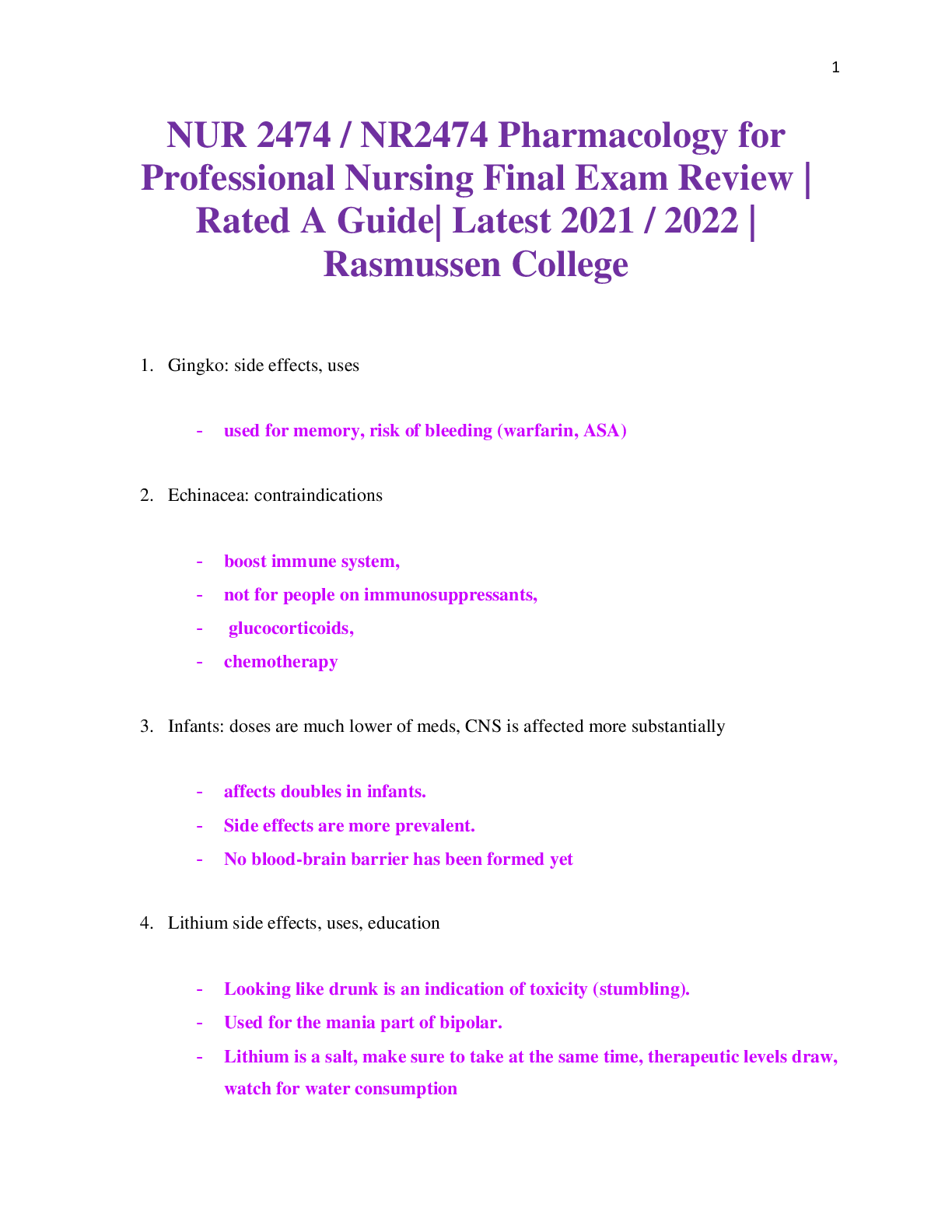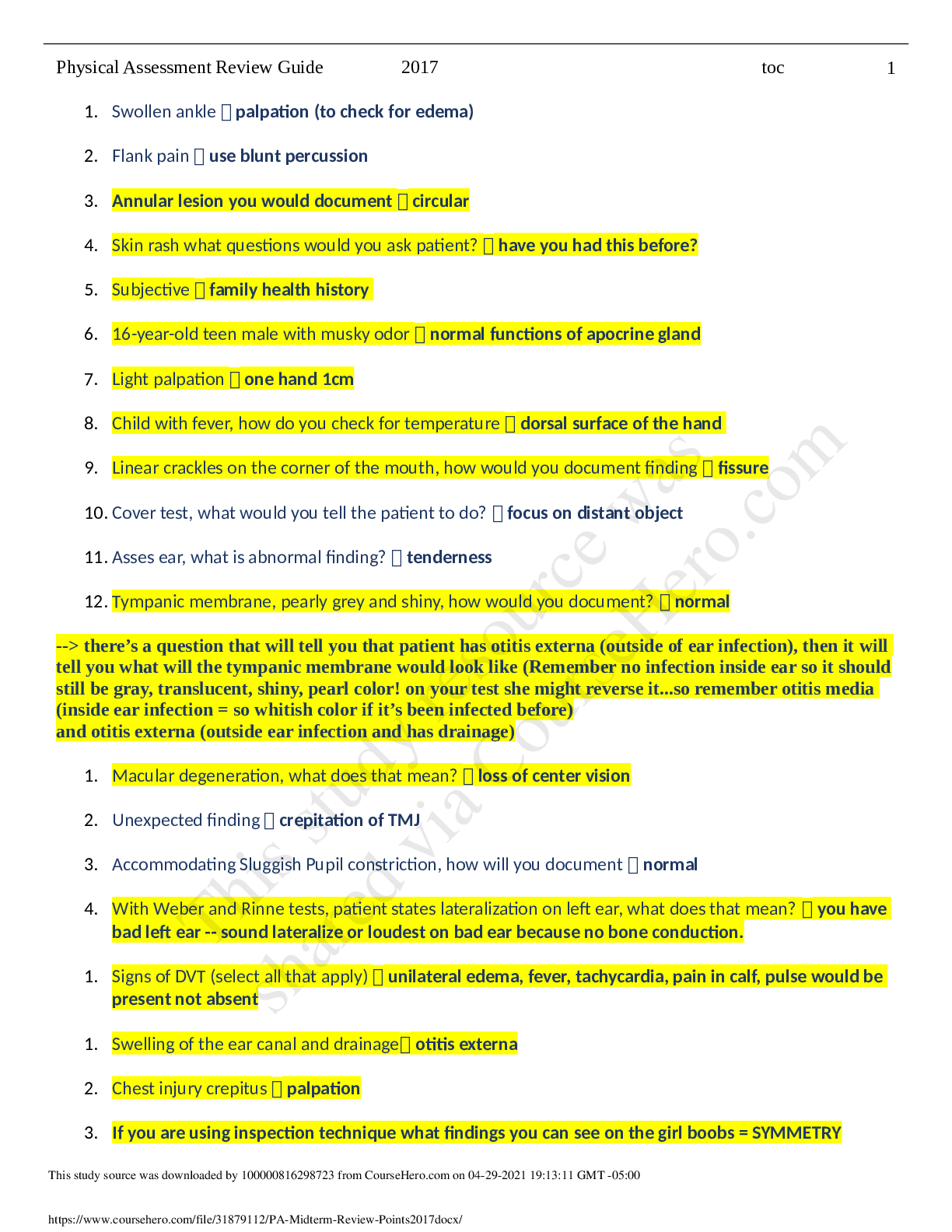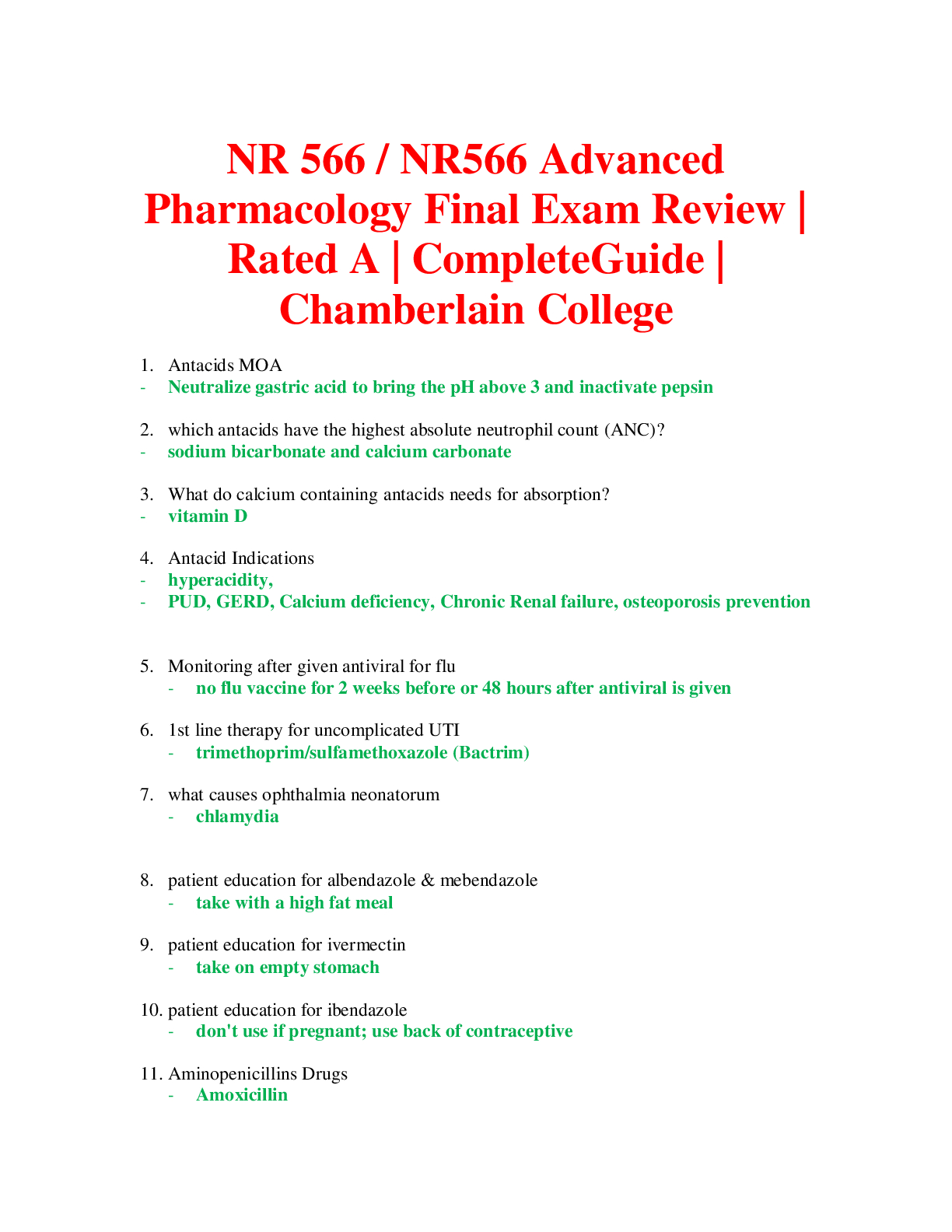*NURSING > EXAM REVIEW > NR 509 / NR509 Advanced Physical Assessment Midterm Review | Rated A Guide | Latest 2021/2022 | Cham (All)
NR 509 / NR509 Advanced Physical Assessment Midterm Review | Rated A Guide | Latest 2021/2022 | Chamberlain College
Document Content and Description Below
NR 509 / NR509 Advanced Physical Assessment Midterm Review | Rated A Guide | Latest 2021/2022 | Chamberlain College 1. subjective data - Symptoms - What pt tells you - goes under ROS 2... . sources of joint pain - If age <60 years, consider repetitive strain or overuse syndromes like tendinitis or bursitis, crystalline arthritis (gout; crystalline pyrophosphate deposition disease [CPPD]) (males), rheumatoid arthritis (RA), psoriatic arthritis and reactive (Reiter) arthritis (in inflammatory bowel disease [IBD]), and infectious arthritis from gonorrhea, Lyme disease, or viral or bacterial infections. - If age >60 years, look for OA, gout and pseudogout, polymyalgia rheumatica (PMR), osteoporotic fracture, and septic bacterial arthritis. - congenital, inflammatory or infectious, immunologic, neoplastic, metabolic, nutritional, degenerative, vascular, traumatic, and toxic? 3. CN 1-6 1) Olfactory- smell 2) Optic- visual acuity with eye chart & pupil response 3) Oculomotor- conjugate gaze with EOM 4) Trochlear- conjugate gaze with EOM 5) Trigeminal- palpate masseter & touch face and have pt identify where 6) Abducens- Conjugate gaze with EOM 4. CN 7-12 7) Facial- Blow cheeks out, smile, frown, pucker lips 8) Vestibulocochlear (Acoustic)- Whisper test 9) Glossopharyngeal- Gag reflex 10) Vagus- say "ahhh". soft palate and uvula rise symmetrically 11) Accessory- shrug shoulders 12) Hypoglossal- Stick out tongue and move left to right 5. epistaxis causes - nosebleed - cause: trauma, inflammation, drying and crusting of the mucosa, tumors and foreign bodies 6. Vesicular lung sounds - soft and low pitched. - They are heard throughout inspiration, continue without pause through expiration, and then fade away about one third of the way through expiration. 7. Bronchovesicular sounds - with inspiratory and expiratory sounds about equal in length, at times separated by a silent interval. Detecting differences in pitch and intensity is often easier during expiration. 8. Bronchial - or louder, harsher and higher in pitch, with a short silence be-tween inspiratory and expiratory sounds. Expiratory sounds last longer than inspiratory sounds. 9. tracheal sounds - Loud, harsh sounds heard over the trachea in the neck 10. Wheezes - high pitched, shrill quality - means narrowed airway, COPD, bronchitis, asthma 11. Rhonchi [Show More]
Last updated: 1 month ago
Preview 1 out of 18 pages
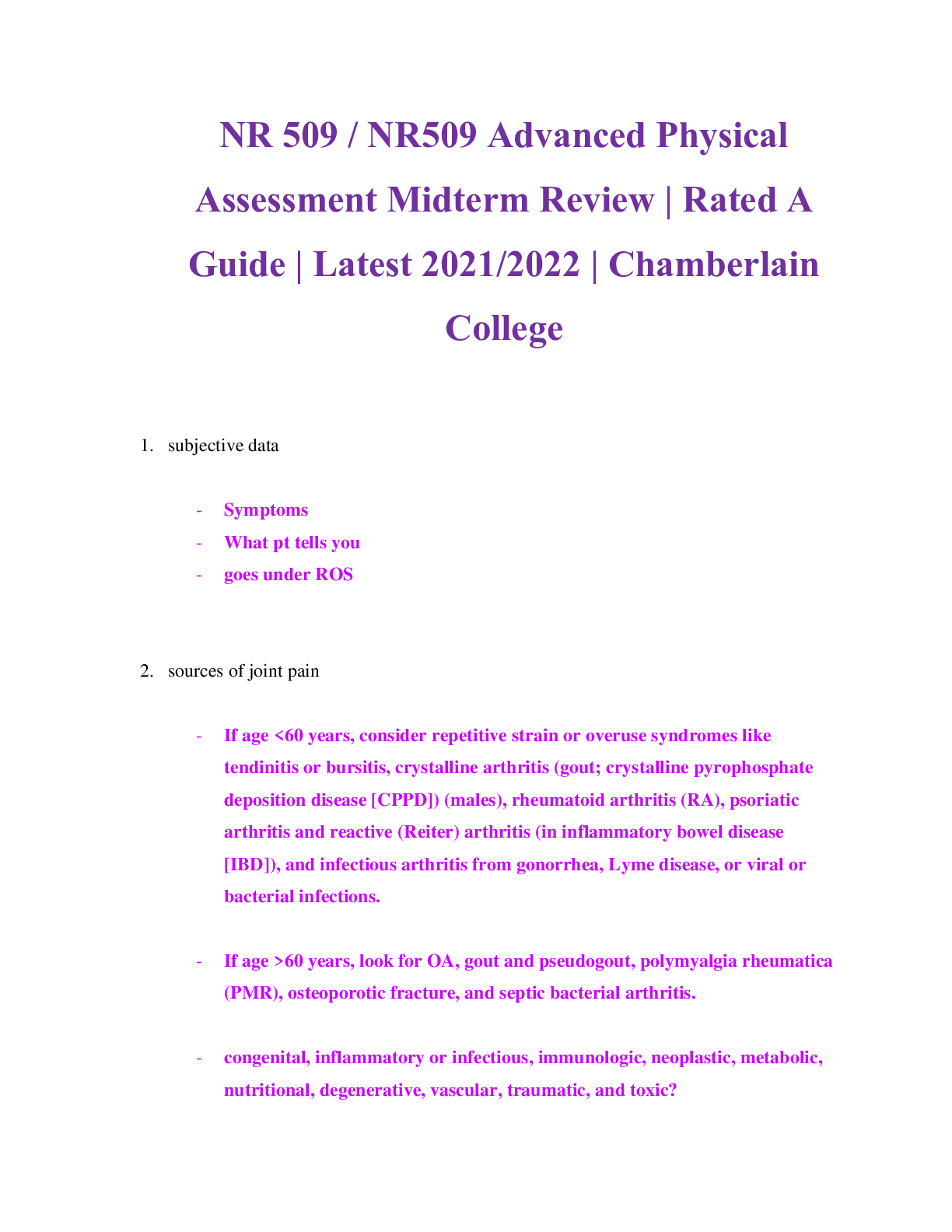
Reviews( 0 )
Document information
Connected school, study & course
About the document
Uploaded On
Jun 08, 2021
Number of pages
18
Written in
Additional information
This document has been written for:
Uploaded
Jun 08, 2021
Downloads
0
Views
59


